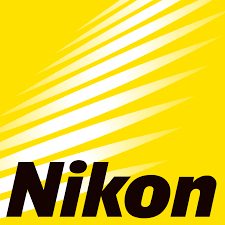Nikon

Nikon's journey in the world of cameras and lenses began in 1917 when it was established as Nippon Kogaku K.K., initially focusing on optical devices such as binoculars and lenses for microscopes. In 1948, the company released its first camera, the Nikon I, which marked its official entry into the camera market. This rangefinder camera gained popularity for its quality optics and durability, setting a precedent for Nikon's future endeavors in the field.
The 1950s saw Nikon's shift towards single-lens reflex (SLR) cameras, with the release of the Nikon F in 1959. The Nikon F quickly became an industry standard, renowned for its ruggedness and versatility. It introduced the now-iconic Nikon F-mount, which has since become one of the most widely used lens mounts in the world. Throughout the following decades, Nikon continued to innovate, introducing advancements such as TTL metering and autofocus technology, solidifying its position as a leader in the camera industry.
In the 1980s and 1990s, Nikon expanded its lens lineup, offering a wide range of focal lengths and specialties to cater to various photographic needs. The introduction of autofocus lenses further enhanced the capabilities of Nikon's cameras, making them more accessible to amateur photographers while maintaining the quality demanded by professionals. This period also saw the emergence of Nikon's legendary professional-grade lenses, such as the Nikon AF-S 70-200mm f/2.8G ED VR II, known for its exceptional optical performance and build quality.
In the digital age, Nikon transitioned its focus to digital SLR (DSLR) cameras, starting with the Nikon D1 in 1999, which was the first DSLR designed and produced entirely by Nikon. Subsequent models, such as the Nikon D3 and D800 series, continued to push the boundaries of imaging technology, introducing features like high-resolution sensors, advanced autofocus systems, and 4K video capabilities. Nikon also expanded its lens lineup to accommodate the demands of digital photography, introducing lenses optimized for high-resolution sensors and new optical technologies.
In recent years, Nikon has embraced the mirrorless camera market with the launch of the Nikon Z series in 2018. The Z series introduced a new lens mount, the Nikon Z-mount, which promises improved optical performance and versatility. Alongside the Z series cameras, Nikon has been steadily expanding its lineup of Z-mount lenses, offering a combination of classic focal lengths and innovative designs. With a legacy spanning over a century, Nikon continues to be a driving force in the world of cameras and lenses, continually innovating to meet the evolving needs of photographers.
The 1950s saw Nikon's shift towards single-lens reflex (SLR) cameras, with the release of the Nikon F in 1959. The Nikon F quickly became an industry standard, renowned for its ruggedness and versatility. It introduced the now-iconic Nikon F-mount, which has since become one of the most widely used lens mounts in the world. Throughout the following decades, Nikon continued to innovate, introducing advancements such as TTL metering and autofocus technology, solidifying its position as a leader in the camera industry.
In the 1980s and 1990s, Nikon expanded its lens lineup, offering a wide range of focal lengths and specialties to cater to various photographic needs. The introduction of autofocus lenses further enhanced the capabilities of Nikon's cameras, making them more accessible to amateur photographers while maintaining the quality demanded by professionals. This period also saw the emergence of Nikon's legendary professional-grade lenses, such as the Nikon AF-S 70-200mm f/2.8G ED VR II, known for its exceptional optical performance and build quality.
In the digital age, Nikon transitioned its focus to digital SLR (DSLR) cameras, starting with the Nikon D1 in 1999, which was the first DSLR designed and produced entirely by Nikon. Subsequent models, such as the Nikon D3 and D800 series, continued to push the boundaries of imaging technology, introducing features like high-resolution sensors, advanced autofocus systems, and 4K video capabilities. Nikon also expanded its lens lineup to accommodate the demands of digital photography, introducing lenses optimized for high-resolution sensors and new optical technologies.
In recent years, Nikon has embraced the mirrorless camera market with the launch of the Nikon Z series in 2018. The Z series introduced a new lens mount, the Nikon Z-mount, which promises improved optical performance and versatility. Alongside the Z series cameras, Nikon has been steadily expanding its lineup of Z-mount lenses, offering a combination of classic focal lengths and innovative designs. With a legacy spanning over a century, Nikon continues to be a driving force in the world of cameras and lenses, continually innovating to meet the evolving needs of photographers.
-
-
-
-
-
-
-
-
-
-
-
- Nikon HB-N106 Lens Hood for AF-P 18-55mm f/3.5-5.6G VR Lens - CompatibleSpecial Price $18.00 Regular Price $29.00














